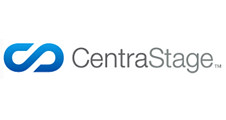Another day, another honking big funding for another online start-up (and yet another broken embargo too!).
It’s like Groundhog Day in Silicon Valley as usual.
Today, Cambridge, Mass.-based HubSpot wins tech’s version of the lottery, grabbing $32 million from Sequoia Capital, Google Ventures and also Salesforce.com.
It is unclear what the valuation for HubSpot is now, although it is likely high given it has raised $65 million now.
HubSpot makes marketing software for businesses, who use it to find prospects and generate leads, along with tools to analyze the process. It claims it has “4,000 customers, over 50 percent market share, five million leads managed, and 70 million page views tracked monthly.”
The Series D financing included HubSpot’s existing venture investors–General Catalyst Partners, Matrix Partners, and Scale Venture Partners–and part of it will be used to cash out existing shareholders. In previous rounds, the start-up has raised $33 million.
Here is the official press release:
Sequoia, Google Ventures, and Salesforce.com Invest $32 Million in HubSpot
Marketing Software Company Attracts New Strategic InvestorsCAMBRIDGE, MA–(Marketwire – March 8, 2011)–Today, for the first time ever, Sequoia Capital, Google Ventures and Salesforce.com all invested together in one company, providing HubSpot with a Series D round of financing through a $32 million investment. HubSpot provides all-in-one marketing software used by over 4,000 businesses to get found by more prospects, convert them into leads and sales, and analyze the entire marketing process.
“The fundamental way that people shop, learn, and buy has changed radically in the last few years. HubSpot helps transform the way businesses market from outbound marketing (cold calls, email blasts, and direct mail) to inbound marketing (Google, blogs, social media, mobile, etc.),” said Brian Halligan, co-founder and CEO of HubSpot.
Sequoia Capital has a long history of partnering with founders to help them build long-term, multi-billion dollar companies, including Google, LinkedIn, AdMob, YouTube, Yahoo!, Apple, and Oracle. “We back companies that are transforming their industries,” said Jim Goetz, General Partner at Sequoia Capital. “HubSpot is the emerging category leader in the SaaS marketing sector. Their customer base exceeds that of all the other relevant marketing software companies combined, including Eloqua, Marketo, Genius, and Manticore.”
“Today, every company needs to succeed in search, social, sales, and marketing–I can’t think of a more powerful trifecta than Google, Salesforce.com, and HubSpot. With 4,000 customers, HubSpot is already a clear marketing leader–now, with this new infusion of capital and recognition by Google’s venture arm and Salesforce.com, HubSpot has a great opportunity to separate itself from the pack and become the leading marketing platform in the small and medium business space,” said Brent Leary, co-founder of CRM Essentials.
Google Ventures Partner, Rich Miner (formerly co-founder of Android) said, “We agree with HubSpot’s belief that search engines, social media, and mobile devices have fundamentally changed how businesses should market themselves. We’re thrilled to support their efforts to help thousands of small and medium businesses reach potential customers.”
Dharmesh Shah, co-founder and CTO of HubSpot commented, “We founded the company based on a simple premise: Businesses want an easy-to-use, complete and integrated marketing platform that helps them get more leads and customers. We plan to use this new capital to further invest in this ambitious vision and further our existing lead in the marketing software category.”
Another day, another honking big funding for another online start-up (and yet another broken embargo too!).
It’s like Groundhog Day in Silicon Valley as usual.
Today, Cambridge, Mass.-based HubSpot wins tech’s version of the lottery, grabbing $32 million from Sequoia Capital, Google Ventures and also Salesforce.com.
It is unclear what the valuation for HubSpot is now, although it is likely high given it has raised $65 million now.
HubSpot makes marketing software for businesses, who use it to find prospects and generate leads, along with tools to analyze the process. It claims it has “4,000 customers, over 50 percent market share, five million leads managed, and 70 million page views tracked monthly.”
The Series D financing included HubSpot’s existing venture investors–General Catalyst Partners, Matrix Partners, and Scale Venture Partners–and part of it will be used to cash out existing shareholders. In previous rounds, the start-up has raised $33 million.
Here is the official press release:
Sequoia, Google Ventures, and Salesforce.com Invest $32 Million in HubSpot
Marketing Software Company Attracts New Strategic InvestorsCAMBRIDGE, MA–(Marketwire – March 8, 2011)–Today, for the first time ever, Sequoia Capital, Google Ventures and Salesforce.com all invested together in one company, providing HubSpot with a Series D round of financing through a $32 million investment. HubSpot provides all-in-one marketing software used by over 4,000 businesses to get found by more prospects, convert them into leads and sales, and analyze the entire marketing process.
“The fundamental way that people shop, learn, and buy has changed radically in the last few years. HubSpot helps transform the way businesses market from outbound marketing (cold calls, email blasts, and direct mail) to inbound marketing (Google, blogs, social media, mobile, etc.),” said Brian Halligan, co-founder and CEO of HubSpot.
Sequoia Capital has a long history of partnering with founders to help them build long-term, multi-billion dollar companies, including Google, LinkedIn, AdMob, YouTube, Yahoo!, Apple, and Oracle. “We back companies that are transforming their industries,” said Jim Goetz, General Partner at Sequoia Capital. “HubSpot is the emerging category leader in the SaaS marketing sector. Their customer base exceeds that of all the other relevant marketing software companies combined, including Eloqua, Marketo, Genius, and Manticore.”
“Today, every company needs to succeed in search, social, sales, and marketing–I can’t think of a more powerful trifecta than Google, Salesforce.com, and HubSpot. With 4,000 customers, HubSpot is already a clear marketing leader–now, with this new infusion of capital and recognition by Google’s venture arm and Salesforce.com, HubSpot has a great opportunity to separate itself from the pack and become the leading marketing platform in the small and medium business space,” said Brent Leary, co-founder of CRM Essentials.
Google Ventures Partner, Rich Miner (formerly co-founder of Android) said, “We agree with HubSpot’s belief that search engines, social media, and mobile devices have fundamentally changed how businesses should market themselves. We’re thrilled to support their efforts to help thousands of small and medium businesses reach potential customers.”
Dharmesh Shah, co-founder and CTO of HubSpot commented, “We founded the company based on a simple premise: Businesses want an easy-to-use, complete and integrated marketing platform that helps them get more leads and customers. We plan to use this new capital to further invest in this ambitious vision and further our existing lead in the marketing software category.”
Surface Encounters
Barry Bonds trial: Giambi brothers due to testify
![]() Major leaguers Jason and Jeremy Giambi were expected to testify Tuesday as Barry Bonds' perjury trial resumed.
Major leaguers Jason and Jeremy Giambi were expected to testify Tuesday as Barry Bonds' perjury trial resumed.
Surface Encounters
New York Yankee <b>News</b>: Granderson, Chavez, Joe West and Barry Bonds <b>...</b>
All the Yankee news you need. ... News links: Feliciano, Romulo, Chavez and the Canseco twins. Mar 2011 by Travis G - 51 comments. Around SB Nation. Game Thread #-1: Brewers @ Padres. Mar 2011 from Brew Crew Ball - 4 comments ...
Surface Encounters
URGENT: Plutonium detected in soil at Fukushima nuke plant: TEPCO <b>...</b>
URGENT: Plutonium detected in soil at Fukushima nuke plant: TEPCO. TOKYO, March 28, Kyodo. Plutonium has been detected in soil at five locations at the crippled Fukushima Daiichi nuclear power plant, Tokyo Electric Power Co. said Monday ...
Surface Encounters
I read an interesting article this morning that suggested Apple would change its mind and put Adobe’s Flash technology on its iOS devices within a year. I don’t think that’s going to happen.
In an open letter to users, Apple CEO Steve Jobs gave several reasons why he didn’t want Flash on the iPad, iPhone or iPod touch. They are: Flash isn’t open; the full web; reliability, security and performance; battery life; and touch.
Adobe began shipping Flash Player 10.1 for Mobile last June, but even Laptop magazine admitted that “Steve Jobs was right,” and that “Adobe’s offering seems like it’s too little, too late.” Granted, that report was from six months ago, but it still doesn’t bode well for the technology.
There is no doubt that Adobe is making advances with Flash on mobile devices, but I don’t believe future changes will be enough to get Apple to adopt the technology.
Jobs has been very clear that Apple supports HTML5, an open technology that is controlled by a standards committee, not one company. By building support for that technology into Webkit, Apple is ensuring that mobile Web browsers will be able to access what we’ve come to know as the “full web.”
Webkit is used by Google, Palm, Nokia and RIM, so it has a pretty solid base.
One of the arguments often bantered about when the discussion of the “full Web” comes up is video. There is no doubt that Flash made huge strides over the years in having sites like YouTube encode their videos in Flash. But that’s for the desktop.
As Jobs points out, almost all of this video is also available in H.264 format (a format Flash also supports), so it’s viewable on the iPhone, iPad and iPod touch.
“Add to this video from Vimeo, Netflix, Facebook, ABC, CBS, CNN, MSNBC, Fox News, ESPN, NPR, Time, The New York Times, The Wall Street Journal, Sports Illustrated, People, National Geographic, and many, many others. iPhone, iPod and iPad users aren’t missing much video,” wrote Jobs.
You may ask why other companies adopted Flash for their mobile devices when Apple won’t. That’s easy, they are looking for something they have that Apple doesn’t. Considering how hard it is for tablet makers to compete with Apple, any perceived advantage will work.
I’m not an Adobe hater—I know quite a few people that work at Adobe and I think they’ve done some amazing things over the years. Flash for mobile devices isn’t one of them.
Chris Dawson said he gives “Apple a year until they cave [and adopt Flash]. Android tablets will just be too cool and too useful for both entertainment and enterprise applications if they don’t.”
I have been using my iPhone for years and my iPad for one year. I honestly can’t remember the last time I went to a Web site that wouldn’t load because I didn’t have Flash installed. I can load videos from YouTube and a host of other sites too, no problem.
Apple has sold more than 160 million iOS devices and there are no screaming, angry hordes of users breaking down the doors at 1 Infinite Loop demanding Flash on their devices.
In order for Apple to change its mind and adopt Flash, the technology has to be proven to be indispensable and that it will benefit its users. Apple has proven just the opposite is true.
Editor’s Note: Jim Dalrymple has been writing about Apple for more than 15 years. You can follow him on Twitter @jdalrymple and on his Web site at The Loop.
In February of 2007, 83.24 percent of users visiting TechCrunch did so from a Windows machine. One year later, in February 2008, the stranglehold remained firm at 80.44 percent. In February 2009, the number was at 74.04 percent. Last year, it was 61.59 percent. And this year? The number of people visiting our site from Windows machines dipped to 53.84 percent.
The writing is on the wall.
Look at those numbers again for a second. In four years, Windows share among TechCrunch readers has fallen 30 percentage points. That’s incredible.
The knee-jerk reaction in the comment section will likely be something like “it’s because you guys cover Apple so much”. But the fact of the matter is that Macintosh share, after rising for three of those four years, fell last year as well. It’s the mobile devices — specifically the iPhone, iPad, and Android devices — that are eating away at Windows.
In fact, if the trend over the past four years continues at about the same pace, in two years, devices made by Apple (Macs, iPhones, iPod touches, and iPads) will surpass devices that run Windows as the top visitors to TechCrunch. And depending on how popular the iPad 2, iPhone 5, and OS X Lion are, it could easily happen next year.
Here are the broken down numbers:
Feb 2007
- Windows: 83.24%
- Mac: 13.59%
- Linux: 2.51%
Feb 2008
- Windows: 80.44%
- Mac: 15.15%
- Linux: 2.97%
- iPhone: 0.77%
- iPod: 0.15%
Feb 2009
- Windows: 74.04%
- Mac: 20.48%
- Linux: 3.01%
- iPhone: 1.60%
- iPod: 0.28%
- Android: 0.09%
Feb 2010
- Windows: 61.59%
- Mac: 28.62%
- iPhone: 4.07%
- Linux: 3.49%
- Android: 0.87%
- iPod: 0.53%
Feb 2011
- Windows: 53.84%
- Mac: 27.64%
- iPhone: 6.72%
- iPad: 3.44%
- Linux: 3.28%
- Android: 3.06%
- iPod: 0.62%
While even the last batch of stats shows that Windows still has a nice cushion over number two, Mac, if you add the Apple products put together, it’s a different story.
- Feb 2007: 13.59% Apple products
- Feb 2008: 16.07% Apple products
- Feb 2009: 22.36% Apple products
- Feb 2010: 33.22% Apple products
- Feb 2011: 38.42% Apple products
In the four year span, Apple has added 25 percentage points to their share among TechCrunch readers. That nearly all of the 30 percentage points that Windows lost in that same span (Android’s growth pretty much fills in the rest).
So it currently stands at Microsoft’s 53.84 percent versus Apple’s 38.42 percent. Again, a big year for iPad, iPhone, and Mac could mean a changing of the guard as soon as next year. But unless something drastic changes, you can be sure that Apple will be dominant among TechCrunch readers in two years.
The latest rumors have Windows 8 showing up sometime in mid/late 2012. But the fact of the matter is that Windows 7, much more widely praised than the disaster that was Vista, hasn’t helped Microsoft buck this trend among our readers. Perhaps they’re only hope of gaining back share at this point is Windows Phone. So far, that hasn’t been going too well. Nokia should help that, but will it be enough to offset the Windows losses?
Humorously, Microsoft’s best hope for not falling to Apple may well be Android. If Google’s platform continues to make gains, it could prolong Apple passing Microsoft.
But again, Apple has iPhone 5, iPad 2, and OS X Lion on the immediate horizon — all within the next few months. And then there’s the very real possibility of another iPad in the fall.
The iPad 2 and iPhone 5 are likely to push the Apple share forward immediately. But don’t sleep on OS X Lion either. The early indications are that Apple has indeed made it much more iOS-like. That means millions of iPad/iPhone/iPod touch owners who have traditionally been PC users, are going to feel a lot more comfortable on a Mac than ever before.
And a new PC-to-Mac data migration system built in to Lion will only help that.
OS X Lion is going to feed off of iOS users, and vice versa. And the Mac ecosystem is going to continue to expand. Just as happened in the browser world with Chrome taking over, a transition is happening among TechCrunch readers in the ecosystem space. The numbers don’t lie. And Microsoft better pray that our readers aren’t leading indicators of overall trends in the space — which is exactly what you have been in the past.
Surface Encounters
Surface Encounters
NYTimes.com's Plan To Charge People Money For Consuming Goods, Services Called Bold Business Move | The Onion - America's Finest News Source
29
Full List - 140 Best Twitter Feeds - TIME
28
The 4th Annual Mashable Awards - Nominations and Votes
28
Leading Digital Journalist Jim Brady Joins Journal Register Company » Journal Register Company -
25
The Shorty Awards - Honoring the best of Twitter and social media
25
A 2.5 Year-Old Uses an iPad for the First Time
23
Leading Digital Journalist Jim Brady Joins Journal Register Company » Journal Register Company -
22
Welcome to Facebook
21
50% of Tweets Consumed Come From Only 0.05% of Twitter Users [STUDY]
20
NYTimes.com's Plan To Charge People Money For Consuming Goods, Services Called Bold Business Move | The Onion - America's Finest News Source
18
NYTimes.com's Plan To Charge People Money For Consuming Goods, Services Called Bold Business Move | The Onion - America's Finest News Source
29
Full List - 140 Best Twitter Feeds - TIME
28
The 4th Annual Mashable Awards - Nominations and Votes
28
Leading Digital Journalist Jim Brady Joins Journal Register Company » Journal Register Company -
25
The Shorty Awards - Honoring the best of Twitter and social media
25
A 2.5 Year-Old Uses an iPad for the First Time
23
Leading Digital Journalist Jim Brady Joins Journal Register Company » Journal Register Company -
22
Welcome to Facebook
21
50% of Tweets Consumed Come From Only 0.05% of Twitter Users [STUDY]
20
NYTimes.com's Plan To Charge People Money For Consuming Goods, Services Called Bold Business Move | The Onion - America's Finest News Source
18
Surface Encounters
autosport.com - NASCAR <b>News</b>: Raikkonen to compete in NASCAR
Former Formula 1 world champion Kimi Raikkonen will make a surprising move to NASCAR this year, the Finn joining the series with a new team.
Surface Encounters
Surface Encounters
Surface Encounters
autosport.com - NASCAR <b>News</b>: Raikkonen to compete in NASCAR
Former Formula 1 world champion Kimi Raikkonen will make a surprising move to NASCAR this year, the Finn joining the series with a new team.
Surface Encounters

















